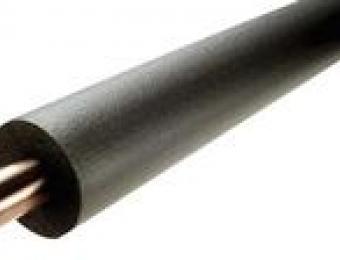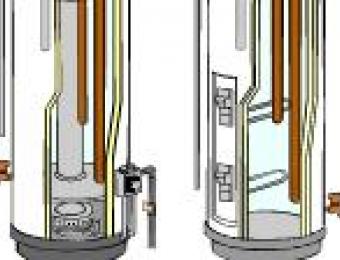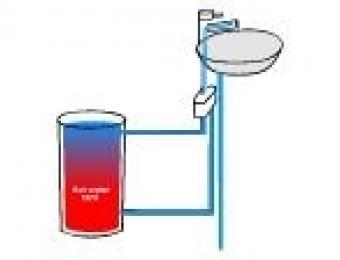What is a hot water recirculation system?
A hot water recirculation system, also known as a 'demand system', is system that connects to your plumbing to ensure that a constant flow of hot water is immediately available when the tap is turned on. It achieves this by pumping hot water through the pipes from your hot water system, either at preset times during the day or when the water at the tap drops below a certain temperature. A hot water recirculation system typically consists of either a single recirculation pump (often called a comfort pump), or a pump and a valve (for retrofitted systems).
How a recirculation system works
Traditionally, when you turn on the hot tap after not having used it for a while, a lot of cold water which has been sitting in the pipes comes out first. In most cases this ‘run off’ water is left to go down the drain while you wait for the water to get warm. A hot water recirculation system is intended to reroute that cold water back to the storage tank for heating, and provide instant hot water to every hot water outlet in the house.
There are two main types of recirculation system. One is generally found in new homes that have had the plumbing designed with recirculation in mind. It involves the installation of a pipe at the end of your house’s hot water network which connects to the hot water tank. This is called the return line. As the water passes through the pipes it comes across a thermostatically controlled valve that tests the water temperature. A circulator pump pushes any water that doesn’t reach the desired warmth back along the return line to your water heater. When the water reaches the right heat, the valve shuts off and the hot water is allowed to flow.
For homes with existing plumbing, there is a retrofit available. Instead of installing a dedicated return line, it connects to and uses the cold water piping instead. The disadvantage to the retrofit is that by using the cold water supply it will let through any water that might still be warm, but not quite warm enough. If the cold tap is turned on, the water will be warmed by the returned hot water.
A particularly important consideration when installing a recirculation system is the efficiency of the insulation fitted to your home's plumbing. Insufficient lagging on pipes can dramatically increase the running costs of a recirculation system.
The benefits of installing a recirculation system
A recirculation system will save the water that would normally be wasted while waiting for the hot water to warm up. It will also save time by fast tracking the hot water to your outlet, so it’s there and ready whenever you turn on the tap. The circulation pump does require electricity (which needs to be accounted for in any assessment of cost), but the amount of water a recirculation system can save is quite substantial. Likewise, the electricity used can be reduced by choosing a circulation pump that operates from a timer, so that it’s only circulating hot water when you’re likely to need it most - for example, just in time for your morning shower!
|
Advantages
|
Disadvantages
|



